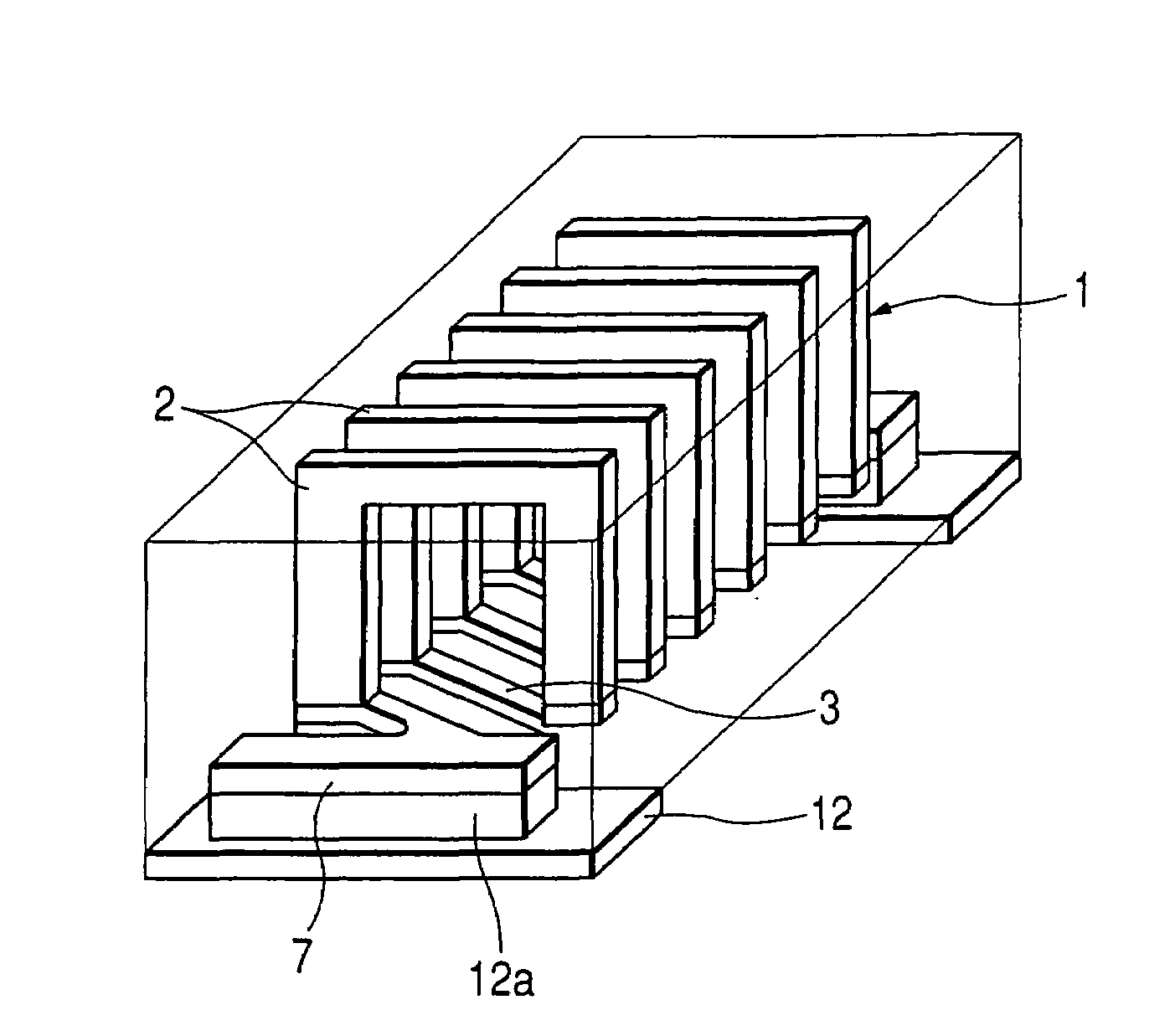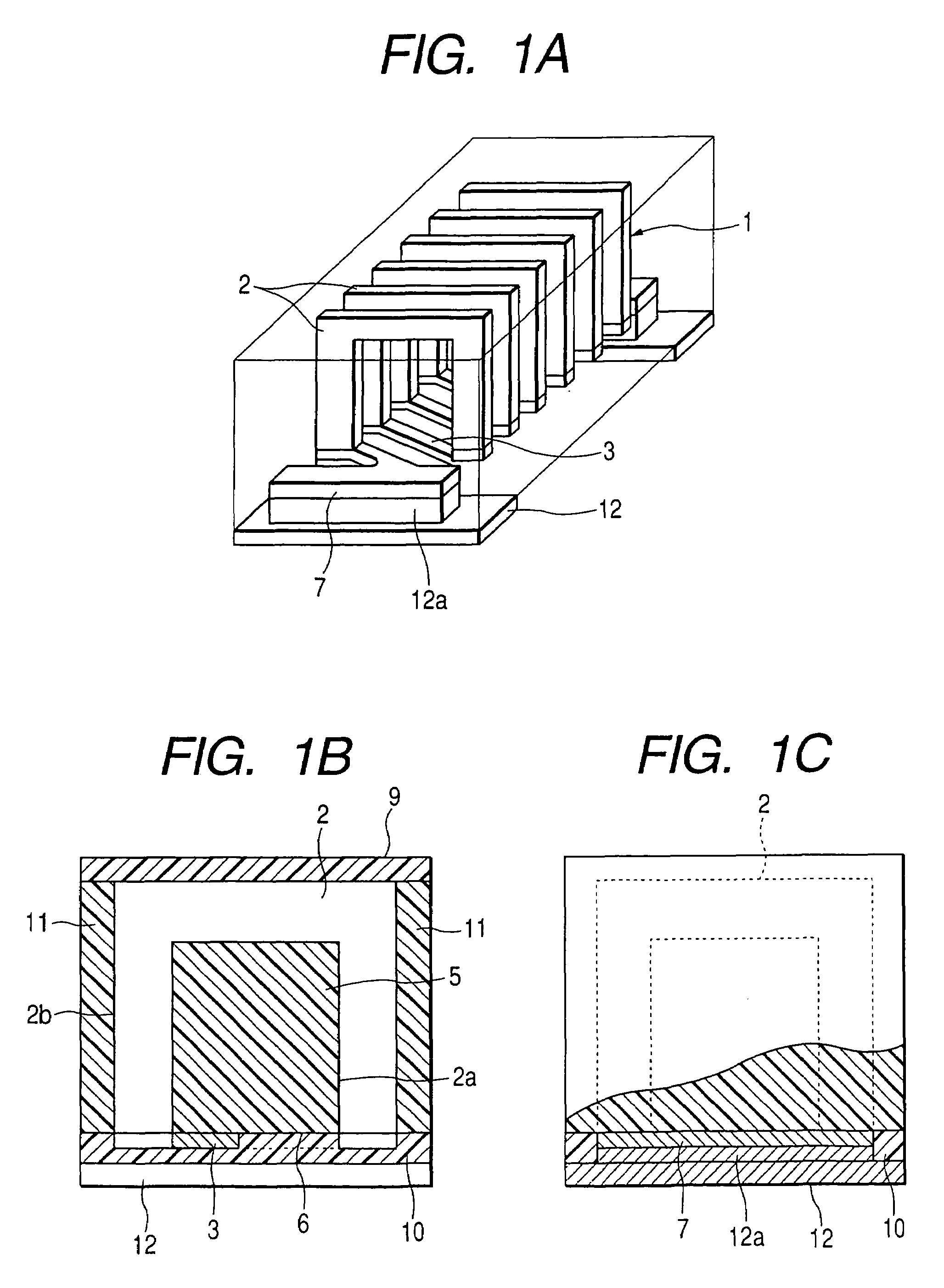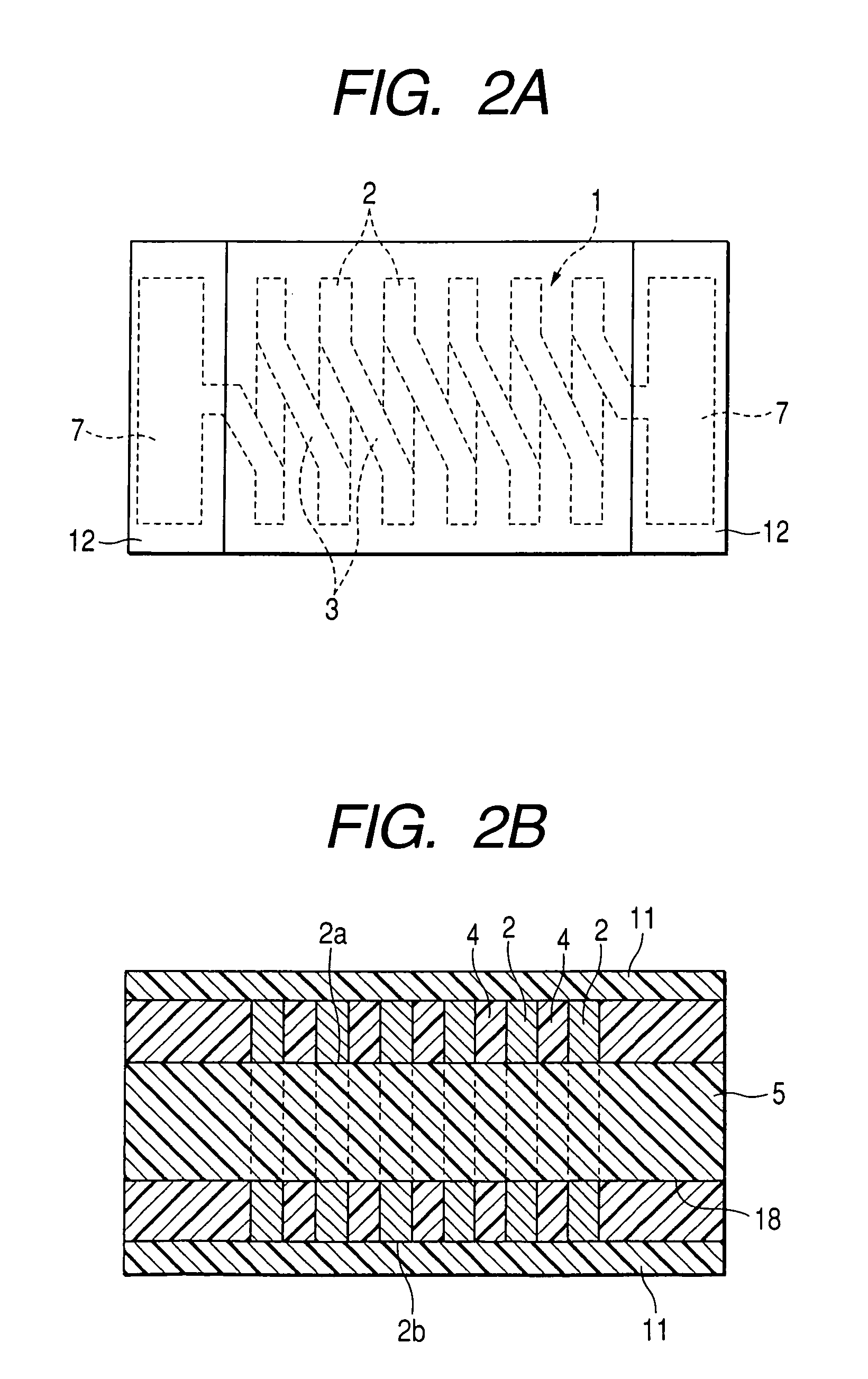Inductive element and manufacturing method of the same
a manufacturing method and technology of inductive elements, applied in the field of inductive elements, can solve the problems of increasing the number of manufacturing stages, unable to manufacture inductive elements with narrow tolerances, and unable to realize high inductance values, etc., to achieve easy mass production, reduce the shift of conductor patterns, and high q characteristic
- Summary
- Abstract
- Description
- Claims
- Application Information
AI Technical Summary
Benefits of technology
Problems solved by technology
Method used
Image
Examples
first embodiment
[0085]FIG. 1A is a transparent perspective view for showing an inductive element of a first embodiment of the present invention, FIG. 1B is a sectional view for representing a structure of the inductive element and FIG. 1C is a sectional view for showing an electrode structure of the inductive element. FIG. 2A is a bottom view for showing the inductive element according to this embodiment, and FIG. 2B is a sectional view for representing the inductive element.
[0086]In FIG. 1 and FIG. 2, reference numeral 1 shows a coil which is constructed in a rectangular helical shape. This helical-shaped coil 1 is arranged by a plurality of U-shaped conductors 2 which constitute 3 sides selected from 4 sides of this coil 1, and a bridge conductor 3. The bridge conductor 3 constitutes the remaining 1 side within the four sides, and connects two sets of U-shaped conductors 2 located adjacent to each other so as to constitute the rectangular helical-shaped coil 1 as an entire structure. As indicated...
PUM
| Property | Measurement | Unit |
|---|---|---|
| depth | aaaaa | aaaaa |
| diameter | aaaaa | aaaaa |
| thickness | aaaaa | aaaaa |
Abstract
Description
Claims
Application Information
 Login to View More
Login to View More - R&D
- Intellectual Property
- Life Sciences
- Materials
- Tech Scout
- Unparalleled Data Quality
- Higher Quality Content
- 60% Fewer Hallucinations
Browse by: Latest US Patents, China's latest patents, Technical Efficacy Thesaurus, Application Domain, Technology Topic, Popular Technical Reports.
© 2025 PatSnap. All rights reserved.Legal|Privacy policy|Modern Slavery Act Transparency Statement|Sitemap|About US| Contact US: help@patsnap.com



